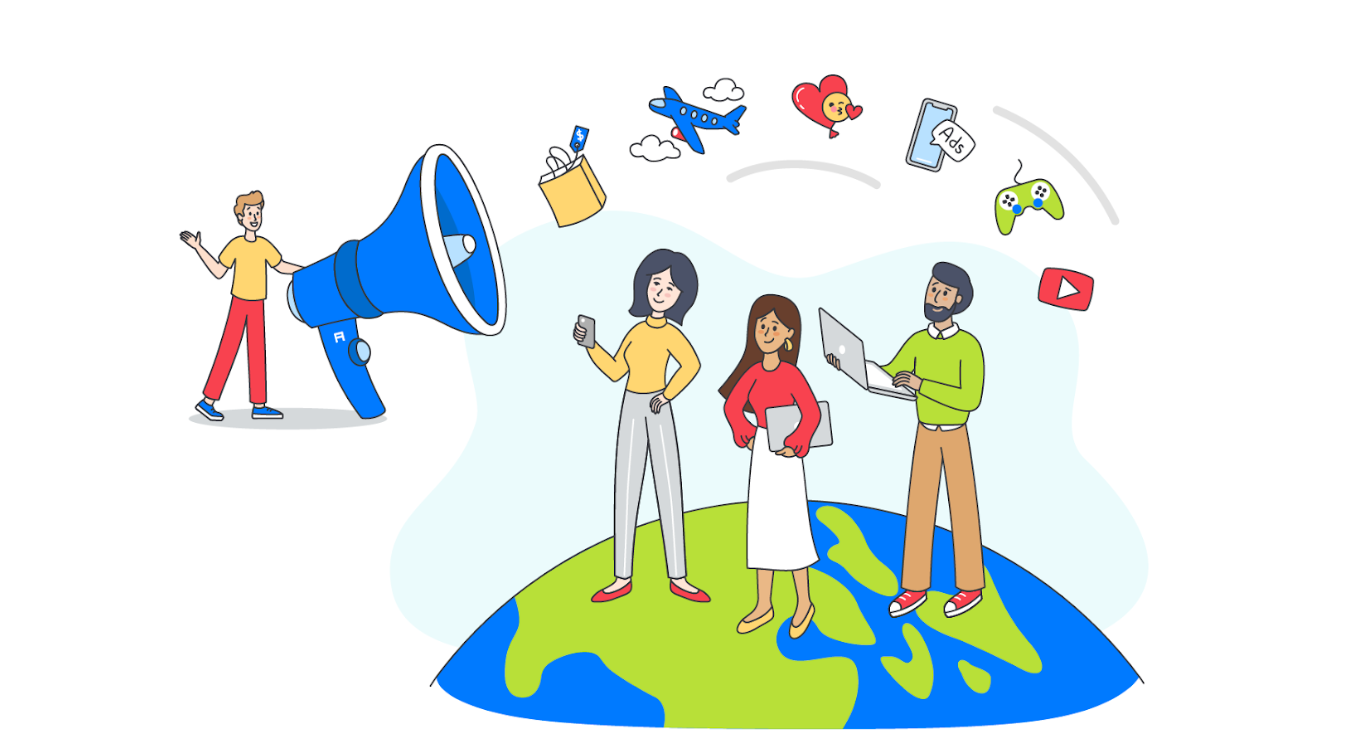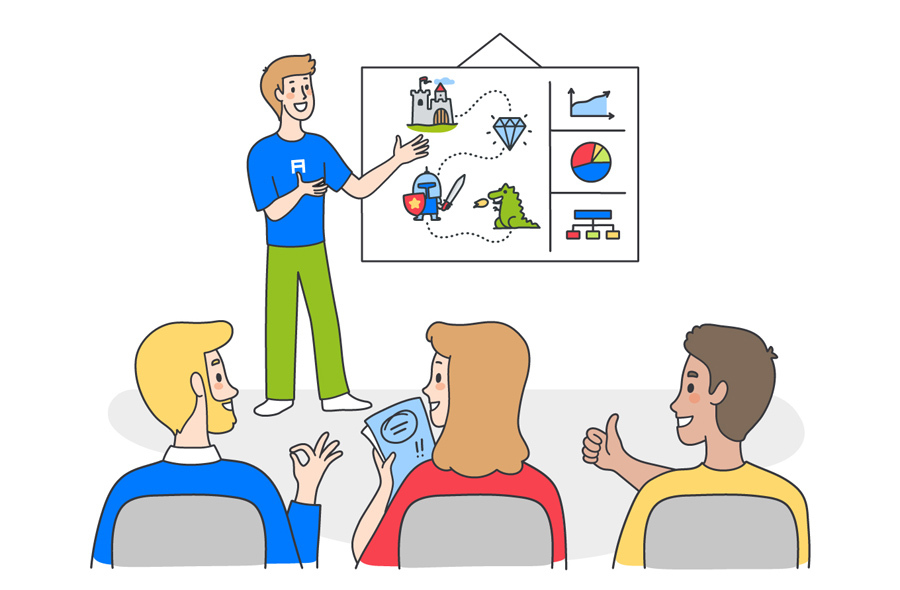Our blog is for executive teams, marketing, product, localization, and localization teams that actively support international business expansion. We share knowledge gained about localization, globalization, and culturalization to assist you in creating informed global growth strategies. Likewise, we do this by drawing on our two decades of experience running a worldwide localization company. 🌎
There are unique difficulties associated with attempting to reach a variety of consumers through marketing localization. Recognizing the intricacy of this undertaking, numerous multinational corporations opt to collaborate with language-service providers. So, how can you make sure that your organization gains from a successful partnership?
In this post, we'll look at four typical challenges that arise when marketing localization is outsourced and offer advice on building a fruitful, long-lasting collaboration.
Challenge 1 Terminology Mix-ups
Often, translators don’t have references for how to handle a company’s specific terminology, so they are just forced to guess. This can result in technical jargon and untranslatable proper nouns being translated literally.
We’re talking about terms like this:
- Names of your programs or services
- Concepts related to your brand
- Menu items that you do not want to have translated or need to be translated a certain way
- Places in space
- Names of characters (such as in a game)
A glossary lists phrases that need definitions and those that are best left untranslated in English and in the languages you localize into. This will help you keep your project's technical papers and marketing materials clear and consistent. These tools can be integrated into your process, so the proper translation is plugged in when a translator comes across it in the source material.

Here’s an example for B2B SaaS providers. There are occasionally certain terms that translate well, but only if they are accurately translated for the tech-savvy corporate audience. Take the term "cloud-based," which is used by the majority of SaaS products. Make sure the translation of "cloud" refers to a network of distant servers, rather than a misty vapor in the sky.
Challenge 2: Inconsistent Tone of Voice
Most enterprises write with a certain customer persona in mind, and need to speak to them in a way that resonates with their preferences, thinking, and behavior. For example, it is common for businesses offering B2B SaaS products to aim for an informal tone while making sure the content is suitable for a B2B audience. Brands need to understand how to ensure that the tone remains the same as in the original and across languages.

Here’s how you handle this:
1. Think of combining the previously mentioned glossary with a style guide, which is an essential document that ensures consistency, quality, and cultural appropriateness across all localized content. When combined, these resources will help you maintain a polished translation and a consistent tone.
Usually, a style guide contains the following:
- Lists of approved terms and phrases, including preferred translations for critical concepts and product-specific jargon.
- Guidelines on the desired tone and how the brand's voice should be conveyed in the target language.
- Specific grammar rules include using formal and informal pronouns, verb conjugation, and sentence structure.
- Guidelines on punctuation usage can vary significantly between languages.
- Date and time formats numbers and measurements.

2. Be careful to discuss any translation corrections you've had to make after working with an LSP in the past with a new one right away. In this manner, you'll alert them to any potential complexities in your project.

3. As your vendor to assign the same translators to all of your projects. These translators learn to know your product, your target market, the tone you want to achieve, and the subtle linguistic differences unique to the setting of your project. Over time, this familiarity makes the translation process more efficient and seamless for all parties.
These three things will help your brand sound just as strong in a foreign language as it will in English.
The recipe for successful localization entails a strong team and dedicated translators working on the project, along with a glossary, refined TM, and style guide, all combined with ongoing communication between the parties.

Diana Yaromskaya, Localization Project Manager at Alconost
Challenge 3: Using the Wrong Translator
Trust your LSP but make sure they have a strong process for finding linguistic resources. LSPs usually evaluate candidates based on their experience, language skills, subject knowledge, and capacity for upholding brand consistency.
For instance, this is how Alconost's selection procedure operates:
1. The localization manager searches Alconost's database for a translator with a relevant area of expertise (marketing in this example).

2. A manager may also seek out other managers for recommendations. Because of their vast experience working on a variety of projects, our translation managers have a thorough awareness of the specializations and strengths of each translator.
3. They search for projects that are comparable to yours and assess how well the translators have reflected the tone and voice of the brand. As a result, they can select translators whose backgrounds align with the requirements of the project. 
4. A useful tool that might be appropriate for some clients who want to view many styles and select directly from translators is a test task. In this instance, we give a short sample of your content to a number of translators at the beginning of the project and ask them to translate it. Next, we assess the translation's quality, focusing on how well it maintains the brand's voice and communicates the intended message.

With this method, there is no need for guesswork, and clients can select the translation that best suits their messaging and brand aesthetic. We think it's important to give our clients concrete options so that their content will immediately connect with their target audience.
Challenge 4: Insufficient Quality Checks
A lot of brands are unable to complete quality checks in house because they don’t have staff that is proficient in the target language. Yet, linguistic quality assurance is critical before releasing products and content into the marketplace.
Besides the bilingual project manager, there are a few choices for evaluating translation quality to make sure your content satisfies your requirements.
In LQA, an application, game, website, or other product that has been translated is carefully examined during the localization testing process. Its goal is to ensure that there are no linguistic or visual flaws, contextual or semantic problems, or mistranslations. Localization testing also includes a comprehensive evaluation of the appropriate application of date and time formats, user interface (UI) components, currency representations, measures, punctuation usage, and general language.

The importance of localization testing lies in its capacity to identify and address any semantic or technological errors in a product's textual content before the localized version is made available to end consumers. This proactive strategy guarantees that everything content-related resonates with the target audience in addition to the product's flawless operation, increasing user satisfaction and the product's market potential.
Outsourcing localization to an LSP can dramatically improve your capacity to connect and engage with global audiences. You can get the most out of an LSP partnership by picking the correct partner, creating effective communication channels, utilizing technology, and encouraging a cooperative relationship. Remember that a successful localization strategy involves more than just word translation—it also entails giving your target audience a genuine and meaningful experience. Making the time and effort to establish a solid working relationship with your LSP will help to guarantee that your efforts to expand internationally are successful and long-lasting.
Alconost is your trusted localization partner, recognized by Inc. Magazine, Clutch and Slator. If you need marketing materials localized by a professional team of translators, don’t hesitate to reach out to the team. We'll gladly discuss your project!




